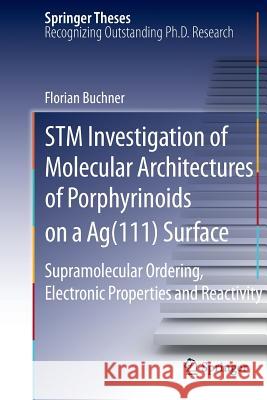STM Investigation of Molecular Architectures of Porphyrinoids on a Ag(111) Surface: Supramolecular Ordering, Electronic Properties and Reactivity » książka
STM Investigation of Molecular Architectures of Porphyrinoids on a Ag(111) Surface: Supramolecular Ordering, Electronic Properties and Reactivity
ISBN-13: 9783642265952 / Angielski / Miękka / 2013 / 164 str.
STM Investigation of Molecular Architectures of Porphyrinoids on a Ag(111) Surface: Supramolecular Ordering, Electronic Properties and Reactivity
ISBN-13: 9783642265952 / Angielski / Miękka / 2013 / 164 str.
(netto: 384,26 VAT: 5%)
Najniższa cena z 30 dni: 385,52
ok. 22 dni roboczych
Bez gwarancji dostawy przed świętami
Darmowa dostawa!
The functionalization of surfaces on the nanoscale is one of the most fascinating and at the same time challenging topics in science. It is the key to tailoring catalysts, sensors, or devices for solar energy conversion, whose functional principle is based on the interaction of an active solid surface with another (liquid or gaseous) phase. As an example, planar transition metal complexes adsorbed on solid supports are promising candidates for novel heterogeneous catalysts. An important feature of these catalysts, compared to supported metal clusters, is the fact that the active sites, i. e., the coordinated metal centers with their vacant axial coordination sites, are well de?ned and uniform. Metalloporphyrinoids are particularly suitable in this respect because they combine a structure forming element--the rigid molecular frame, which often induces long range order--with an active site, the coordinated metal ion. Its planar coordination environment leaves two axial coordination sites available for additional ligands. If adsorbed on a surface, one of these axial sites is occupied by the underlying substrate. The resulting electronic interaction with the surface can be used to tailor the electronic structure and thereby the reactivity of the metal center. The remaining site is free for the attachment of molecules (sensor functionality) and/or operates as a reaction center (single-site catalysis). Prototype examples are omnipresent in nature, where in particular metallo-tetrapyrrols play a decisive role in important biological processes, with the most prominent examples being iron porphyrins in heme, magnesium porphyrins in chlorophyll, and cobalt corrin in vitamin B12.
The self-assembly of large organic molecules has become a vividly explored and interdisciplinary field in science. One major goal is the tailored fabrication of highly ordered, molecular networks, which are stabilized on a metal surface. Metalloporphyrins receive particular attention, because their distinct intrinsic functionalities make them promising candidates for applications in chemical sensors, solar cells, and for tailored catalytic processes. Based on scanning tunneling microscopy investigations, several novel and fundamental contributions are presented, which has led to a new level of understanding. Highlights are the results with respect to intramolecular conformation and supramolecular ordering, electronic interactions with the substrate, surface confined synthesis such as in-situ metallation reactions, and ligand effects.The number of publications this work has led to emphasises its quality and significance.











